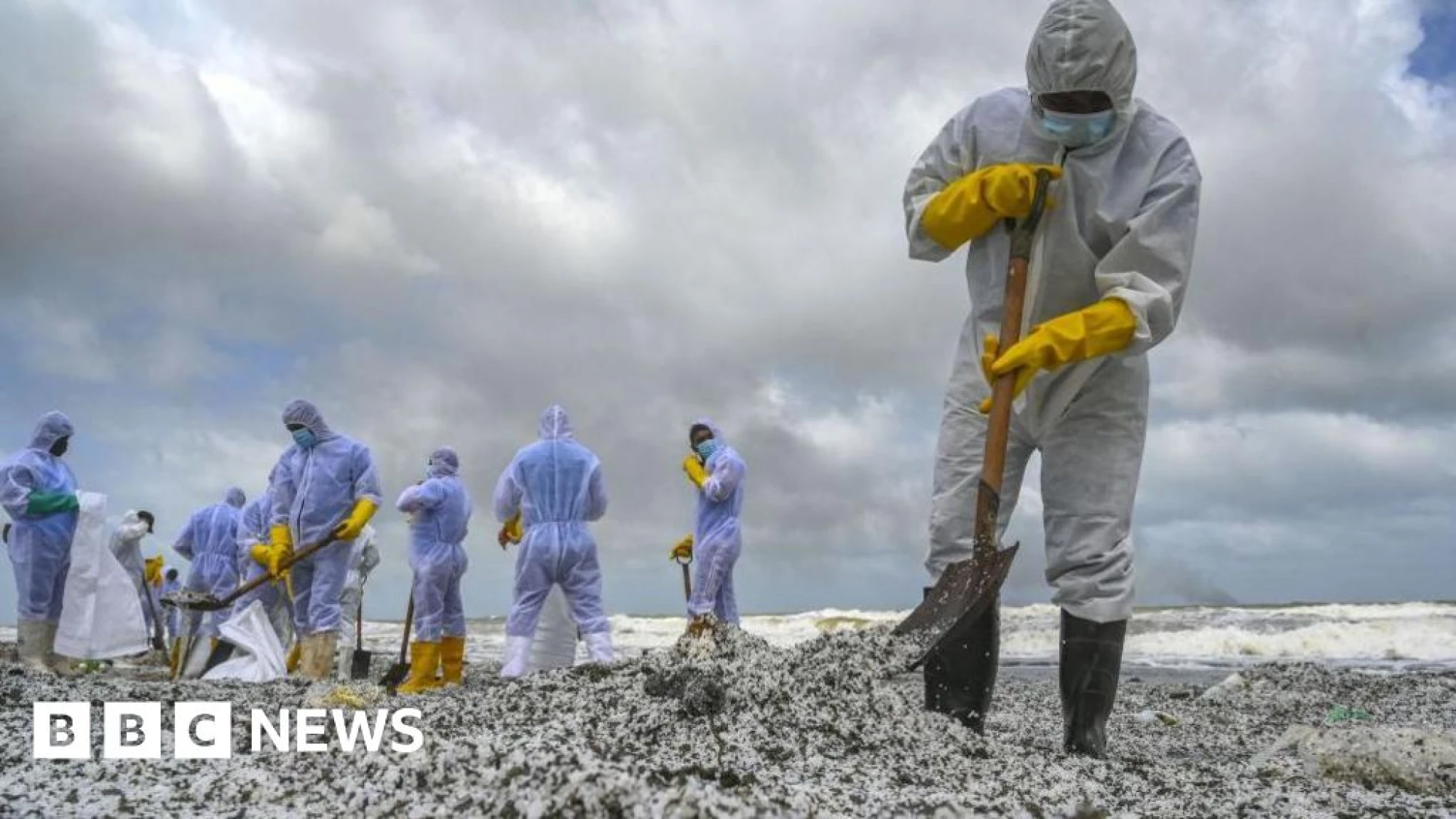BBC uncovers lasting toxic legacy of cargo ship disaster off Sri Lanka

Scientists warn the damage to the environment after the 2021 X-Press Pearl disaster could be much more enduring.
Watch LiveBritish Broadcasting CorporationHomeNewsSportBusinessInnovationCultureArtsTravelEarthAudioVideoLiveHomeNewsIsrael-Gaza WarWar in UkraineUS & CanadaUKUK PoliticsEnglandN. IrelandN. Ireland PoliticsScotlandScotland PoliticsWalesWales PoliticsAfricaAsiaChinaIndiaAustraliaEuropeLatin AmericaMiddle EastIn PicturesBBC InDepthBBC VerifySportBusinessExecutive LoungeTechnology of BusinessFuture of BusinessInnovationTechnologyScience & HealthArtificial IntelligenceAI v the MindCultureFilm & TVMusicArt & DesignStyleBooksEntertainment NewsArtsArts in MotionTravelDestinationsAfricaAntarcticaAsiaAustralia and PacificCaribbean & BermudaCentral AmericaEuropeMiddle EastNorth AmericaSouth AmericaWorld’s TableCulture & ExperiencesAdventuresThe SpeciaListEarthNatural WondersWeather & ScienceClimate SolutionsSustainable BusinessGreen LivingAudioPodcastsRadioAudio FAQsVideoLiveLive NewsLive SportHomeNewsSportBusinessInnovationCultureArtsTravelEarthAudioVideoLiveWeatherNewslettersWatch LiveBBC uncovers lasting toxic legacy of cargo ship disaster off Sri Lanka3 days agoShareSaveLeana Hosea & Saroj PathiranaNegombo, Sri LankaShareSaveAerial footage shows the X-Press Pearl breaking up and sinkingFour years after a stricken cargo ship caused the largest plastic spill ever recorded, volunteers on Sri Lanka's beaches are still sifting kilograms of tiny, toxic plastic pellets from the sand.
Billions of plastic nurdles, as they are called, are thought to have washed up after the X-Press Pearl disaster in 2021, along with tonnes of engine fuel, acid, caustic soda, lead, copper slag, lithium batteries and epoxy resin - all toxic to aquatic life.
The immediate damage was obvious: the nurdles inundated the shoreline, turning it white, while dead turtles, dolphins and fish began washing up.
But scientists are now flagging fears the damage to the environment could be much more enduring than previously thought.
So far, hundreds of millions of nurdles may have been cleared away - but the remaining, lentil-sized microplastic granules have become increasingly difficult to find as they disappear deeper into the sand.
https://www.bbc.com/news/articles/cly8y5kmrllo?at_medium=RSS&at_campaign=rss
Rating: 5